AARP Hearing Center


In this story
Where to start • Create a haven for sleeping • When you're struggling
Since a third of our lives is spent sleeping, you’d think we’d all be experts at it. Yet for many Americans suffering from chronic sleep problems, falling — and staying — asleep is anything but easy. If you’ve spent restless nights tossing and turning, chasing sleep that just won’t come, you don’t have to live in groggy agony. Here are steps to fine-tune your sleep routine, so you, too, can drift off to dreamland more easily.


WHERE TO START
1. Learn your numbers
In your 20s, you needed eight to nine hours of sleep, but in your 50s, you need about an hour less, says Nalaka Gooneratne, M.D., a sleep medicine physician and geriatrician at the University of Pennsylvania’s Perelman School of Medicine. Listen to your body to find the amount of sleep that’s best for you. Although some people may do better with less sleep, for most adults, getting seven to eight hours per night of quality sleep is critical for health and well-being, says Wendy M. Troxel, a senior behavioral and social scientist at the Rand Corp. Start by paying attention to your alertness levels during the day as a better measure of sleep quality, suggests Sara Benjamin, M.D., a neurologist at Johns Hopkins Medicine specializing in sleep disorders. If you’re always tired or run-down, it could be a sign you’re not getting enough — or enough quality — sleep. Sleepiness or brain fog could signal a medical issue, such as sleep apnea, so you’ll want to get that checked out.
2. Avoid light before bedtime
To signal your body it’s time to wind down, do your best to reduce bright light exposure in the evening and at night. Take small steps such as using low-light table lamps instead of bright overhead lights indoors at night and wearing sunglasses if you’re going to be outside in the summertime after dinner, Benjamin suggests. “You want to prioritize less bright light in the evening and more bright light exposure in the morning,” she says.
3. Try a sleep mask
“Wearing a sleep mask can improve sleep by addressing several environmental factors, including blocking out any artificial light and creating a dark environment for sleep,” says Funke Afolabi-Brown, a triple-board-certified sleep medicine physician. “This facilitates the production of the sleep hormone melatonin as darkness serves as a signal to the melatonin production center in the brain called the pineal gland, and less light exposure makes us less likely to have sleep disruptions and awakenings from light pollution.” W. Chris Winter, who has practiced sleep medicine and neurology in Charlottesville, Virginia, since 2004, loves the portability of sleep masks: “They help to ensure dark hotel rooms and better odds of falling asleep on a plane.” Make sure the mask is comfortable — not too tight or too loose.
4. Stick to your routine
Once you’ve found your ideal rhythm, stick with it, even on weekends. When it comes to maximizing overall sleep health, “there is nothing better than routine — it’s a must,” says Abhinav Singh, M.D., facility director of the Indiana Sleep Center in Greenwood, Indiana, and medical review panel member for SleepFoundation.org. Research has shown that disruptions in sleep regularity — including wide swings in waking and sleeping time from day to day — can negatively affect your metabolism, lead to an increased risk of diabetes and even damage overall cardiovascular health.
5. Get daytime light exposure
Light exposure helps drive the body’s circadian rhythm, which is key to the natural sleep-wake cycle. The presence of light sends a signal to the body that it’s time to be awake — and the absence means it’s time to go to sleep. With this fact in mind, you can boost your body’s natural wake-sleep differential by getting outside for some sunshine at least a little while each day — best if done in the morning. “Light is by far the strongest cue to our circadian rhythm, but you have to consistently expose the body to light and dark cues over a few weeks in order to really set and strengthen it,” says Oregon State University assistant professor Jessee Dietch, a psychologist certified in behavioral sleep medicine who runs the school’s Sleep Health Assessment, Intervention and Dissemination lab. If you live in a region that’s often overcast, as Dietch does, consider investing in a SAD (seasonal affective disorder) therapy light to boost your daytime light exposure. These added rays during the day could help your body feel sleepy come nighttime, when the lights go out. According to the Mayo Clinic, look for a light that provides an exposure of 10,000 lux and produces as little ultraviolet as possible. Use it the first hour you wake up for 20 to 30 minutes. Position the light 16 to 24 inches away from your face, and keep your eyes open, but don’t stare directly at the light. Models range in price from around $25 to $200. Keep in mind the Food and Drug Administration doesn’t regulate light boxes and health insurance typically doesn’t cover them.
6. Understand your chronotype
Your chronotype is your preferred time of day for normal activities, or your underlying circadian rhythm. Divided into four categories — bear, wolf, lion, dolphin — chronotypes tell you when to sleep according to your internal clock. (Yes, we’ve advanced beyond early birds and night owls!) Most people are considered bears: They sleep and wake according to the sun. The wolf chronotype prefers to wake at noon, and lions like to rise early and are productive until about noon. Dolphins, well, they have trouble following any schedule and are most productive from 10 a.m. to 2 p.m. To find out which chronotype you are, experiment — without an alarm clock — over two to three weeks to find your natural sleep rhythms, suggests Alicia Roth, a clinical health psychologist with Cleveland Clinic who specializes in behavioral sleep medicine. Go to bed when you feel sleepy. Get up when your body wakes naturally. If you find yourself feeling alert and well rested as a result, make this sleep-wake cycle your go-to, and read more about your chronotype to tap into more tips.
7. Limit alcohol before bed
For best sleep quality, don’t drink alcohol at least four hours before bedtime. “Alcohol absolutely disturbs sleep, so reducing alcohol intake close to bedtime is a solid tip,” Dietch says. A drink may initially help you feel relaxed and sleepy, but studies have repeatedly shown that alcohol disrupts the body’s normal sleep stages, including reducing the deep sleep and REM cycles that are key for overall sleep quality. In addition, the extra liquid before bed can lead to a need to urinate during the night that wakes you from slumber.
8. Cut down on caffeine
If you’ve been having trouble kicking that late-afternoon coffee habit, try again. Or at least order decaf. Science has consistently shown drinking caffeine within six hours of bedtime leads to disrupted sleep. Specifically, late-day caffeine intake can disrupt the body’s natural circadian rhythm, prolong the time it takes to fall asleep, and reduce sleep length and quality. To get a better night’s rest, relegate your caffeinated drinks to breakfast and lunch — or skip them altogether, and be mindful of other ways you ingest caffeine, such as through chocolate.
9. Try skipping naps
If you struggle to get to sleep or stay asleep at night, daytime naps could be part of the problem. Every person has a maximum amount of hours their body likes to sleep per 24-hour time frame, and if you tap into that total for daytime naps, your nighttime sleep may suffer, says Mohan Dutt, M.D., a sleep specialist at the University of Michigan Health Sleep Disorders Centers and cocreator of White Noise: A Sleep Medicine Podcast. If you must take a daily nap, limit it to 15-20 minutes, Dutt advises. If you have a habit of napping at a certain time or place each day, say in your recliner after lunch, switch up your routine and add a walk at that time to avoid the temptation of prolonged daytime snoozing. Here’s how to take productive naps.
10. Exercise your brain and body
Getting adequate daily exercise improves overall sleep quality and can help you fall asleep more quickly, research has shown. A 2015 study showed getting just 150 minutes of moderate exercise per week helped improve participants’ chronic insomnia. A 2021 review looking at the effects of exercise on sleep quality and insomnia in adults published in the journal Frontiers in Psychiatry suggested that regular physical, as well as mind-body exercise primarily improved subjective sleep quality rather than physiological sleep quality in adults. “I like to say exercise is the best sleeping pill,” Roth says. “I very much advocate for people who have retired to find ways to stay mentally or physically active during the day — it’s very important to your sleep.” Many sleep guidelines recommend avoiding high-intensity physical activity in the hour or two before bedtime, but a 2021 analysis questioned that restriction, finding no solid link between nighttime exercise and sleep disruption for most people. So feel free to get moving, whenever it fits into your schedule.
11. Have a reason to wake up
It may be tempting to fall into erratic patterns of staying up late and dozing in bed into the midmorning if retirement leaves you with no clear-cut schedule. To help build a healthier routine — and more consistent sleep schedule — devise fun reasons to get up and get going in the morning. “You need a purpose or motivation to get out of bed,” says Rafael Pelayo, M.D., a sleep medicine specialist with Stanford Health Care and author of How to Sleep: The New Science-Based Solutions for Sleeping Through the Night. “Plan a regular breakfast or coffee outing with friends or an exercise walk with others,” Pelayo says. “It’s a great way to stay connected and give purpose to your morning.”
12. Try nasal strips for better breathing
Over-the-counter nasal strips — such as Breathe Right or Clear Passage or nasal dilators, like AirMax Nasal Dilators — can help keep your nasal passages open, meaning less snoring and stuffiness, two things that can lead to less than stellar sleep. Although strips may help reduce nighttime awakenings and improve daytime functioning, it is important to rule out disorders such as sleep apnea, which typically can’t be adequately treated by nasal strips.



























































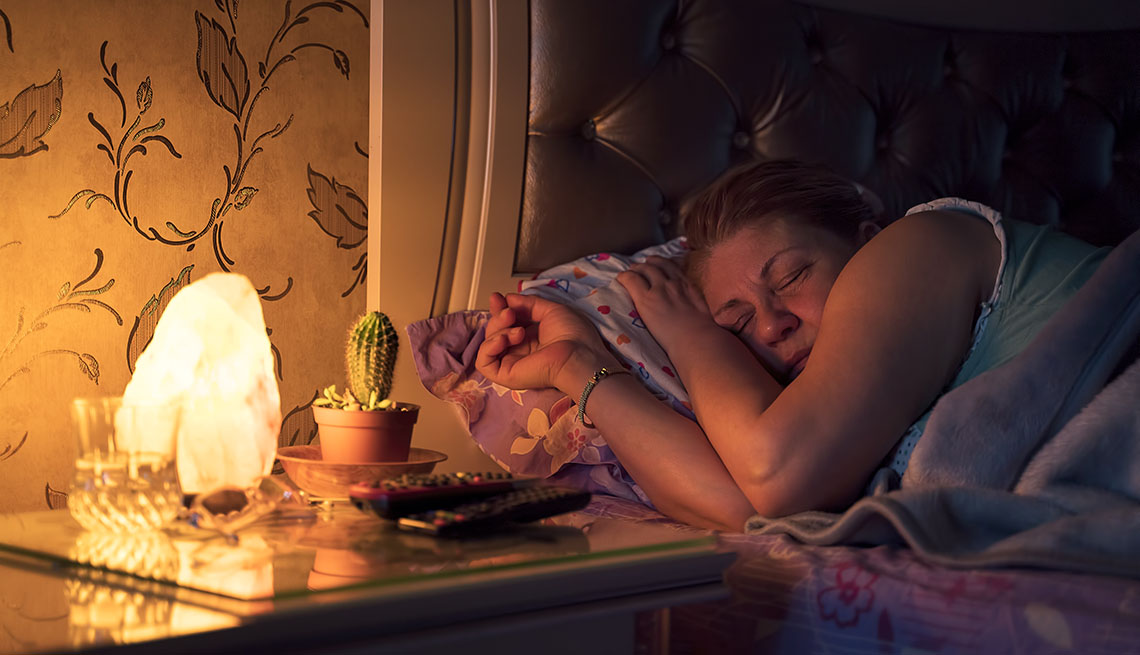


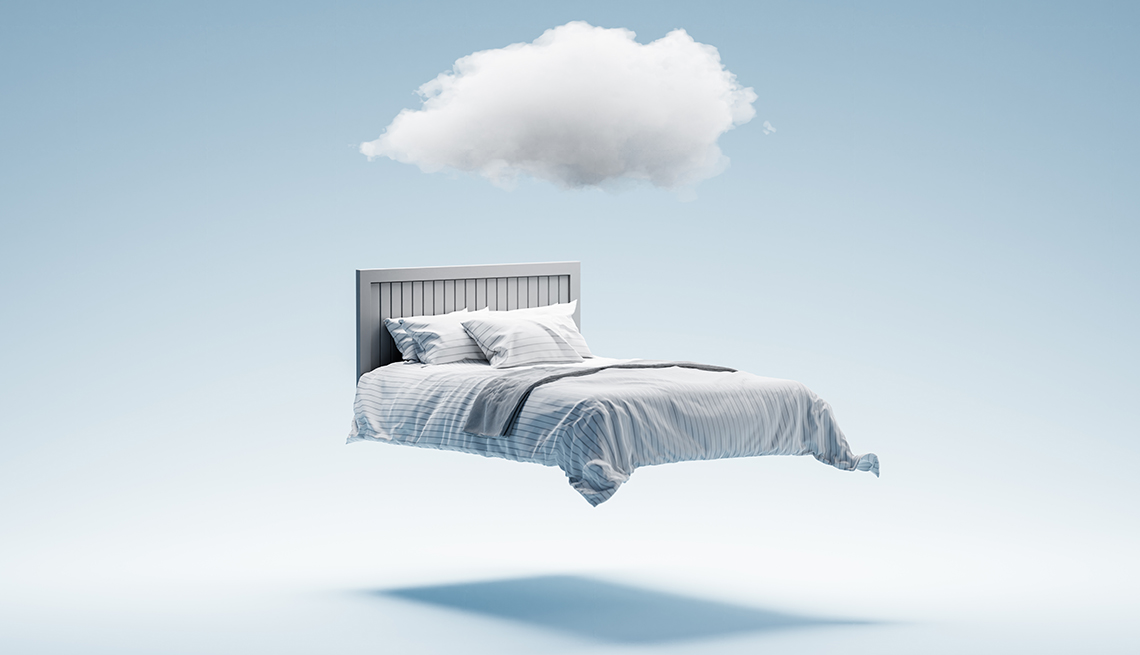
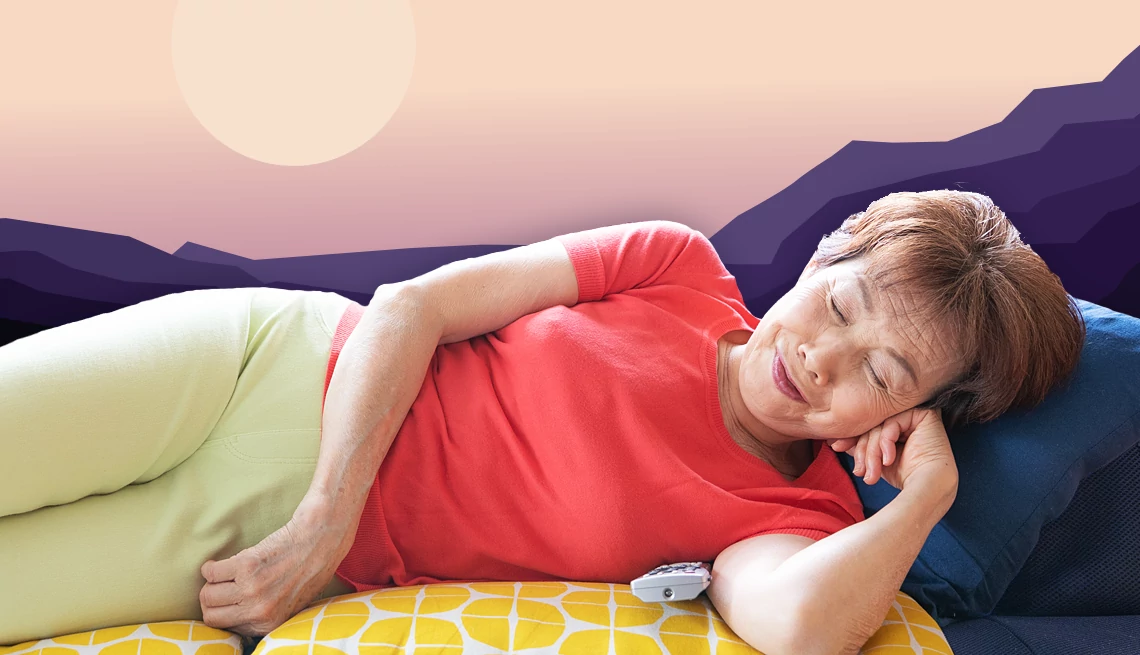
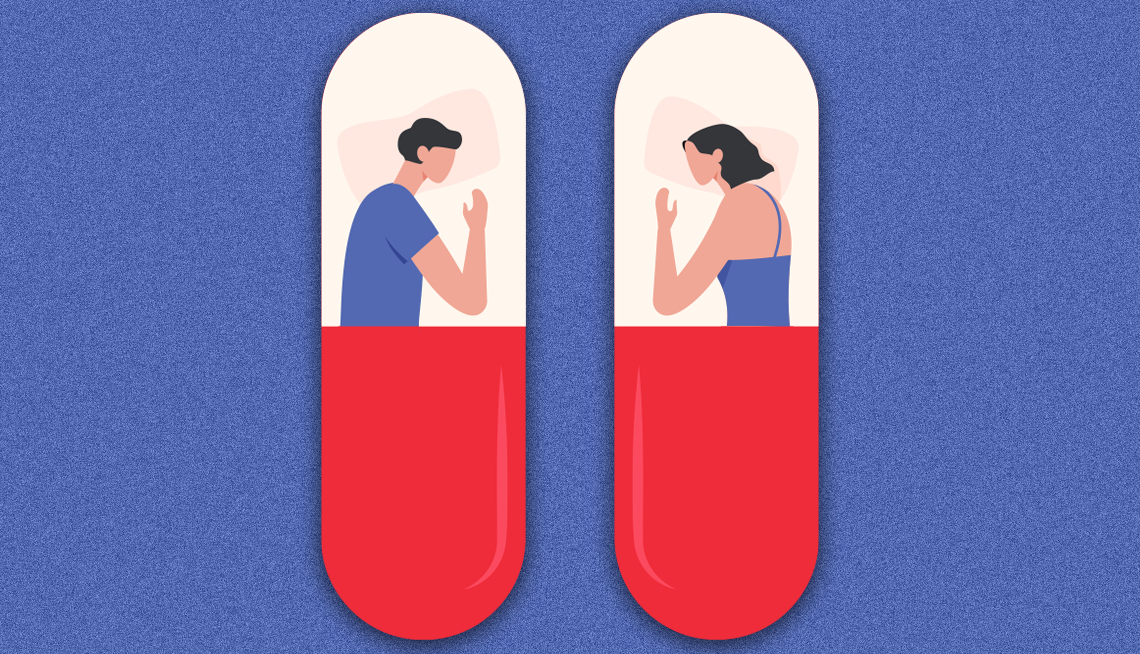
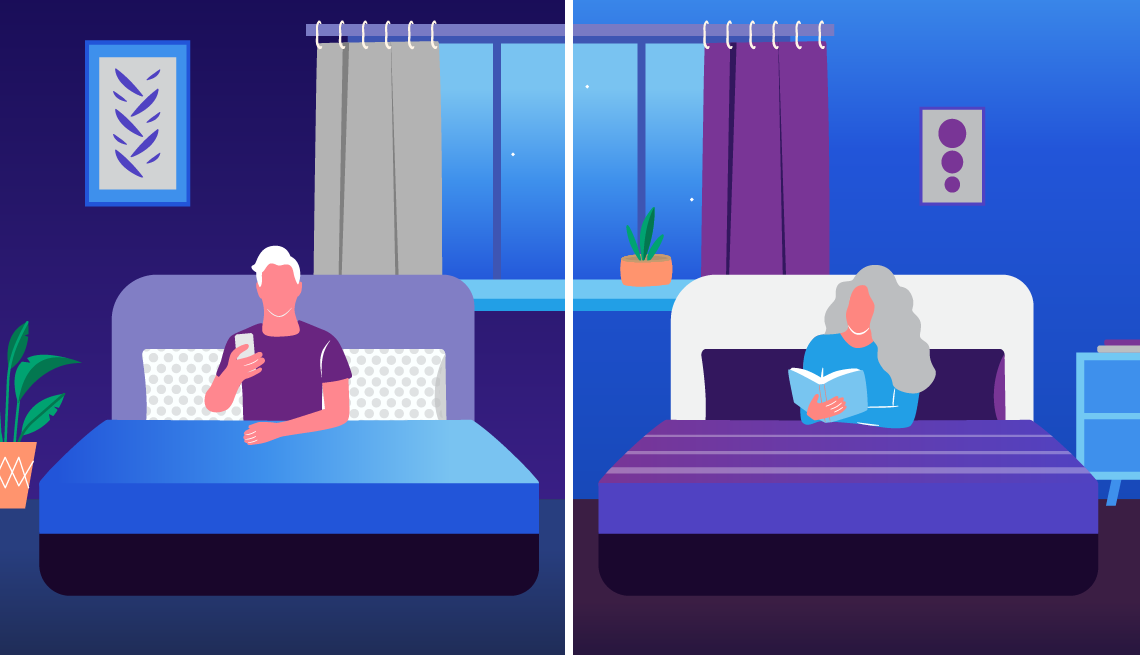
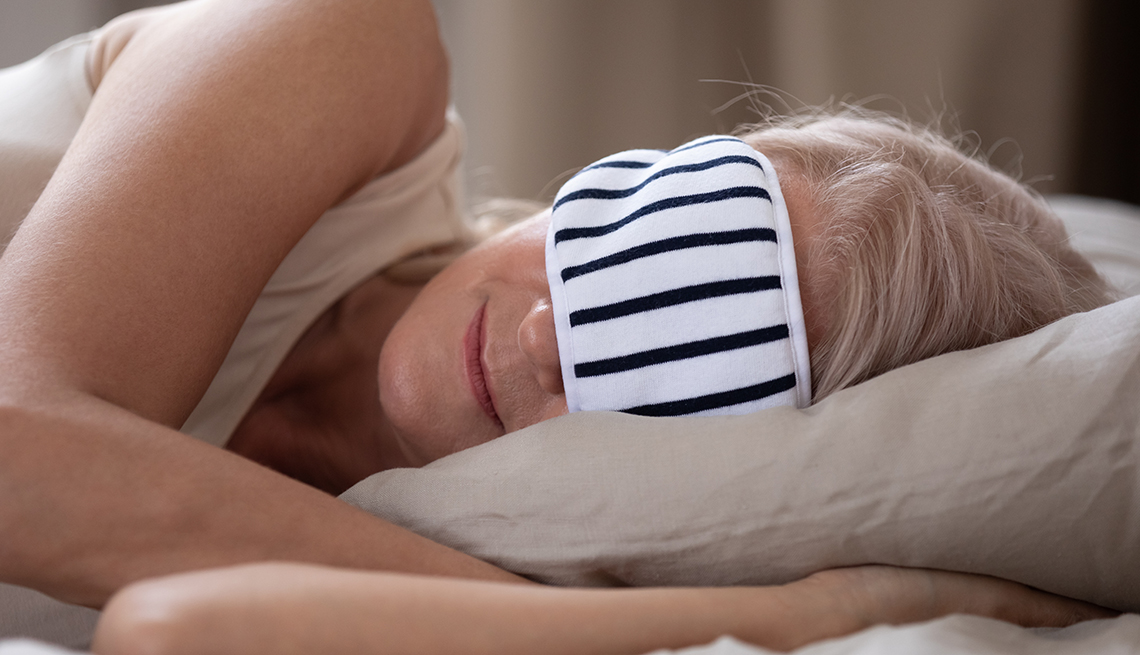
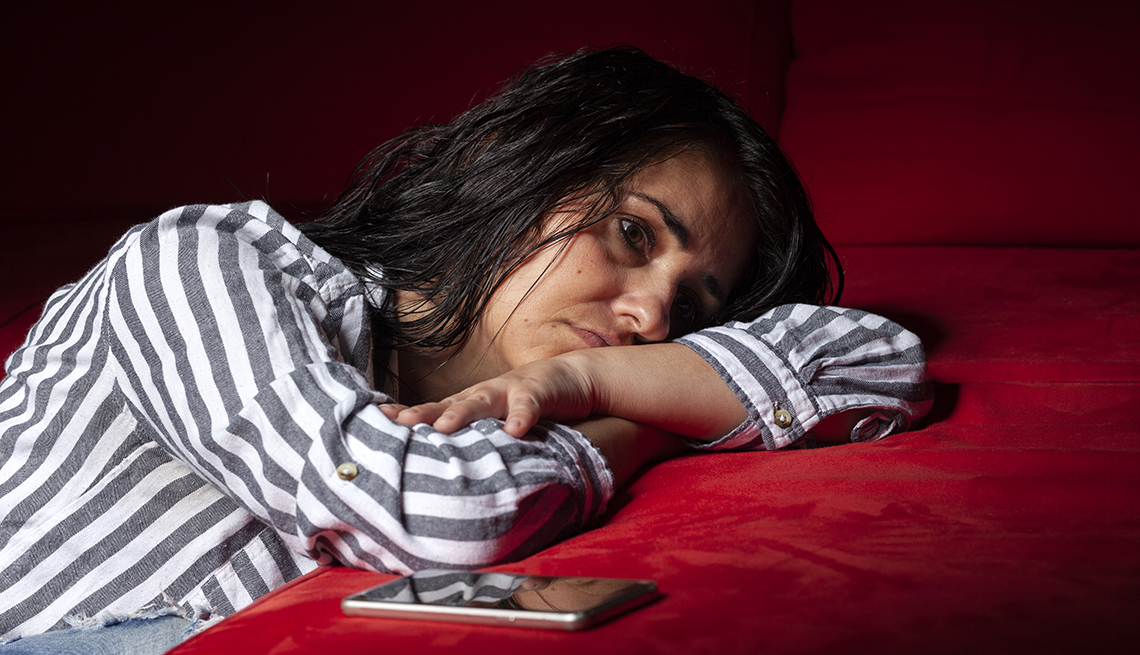

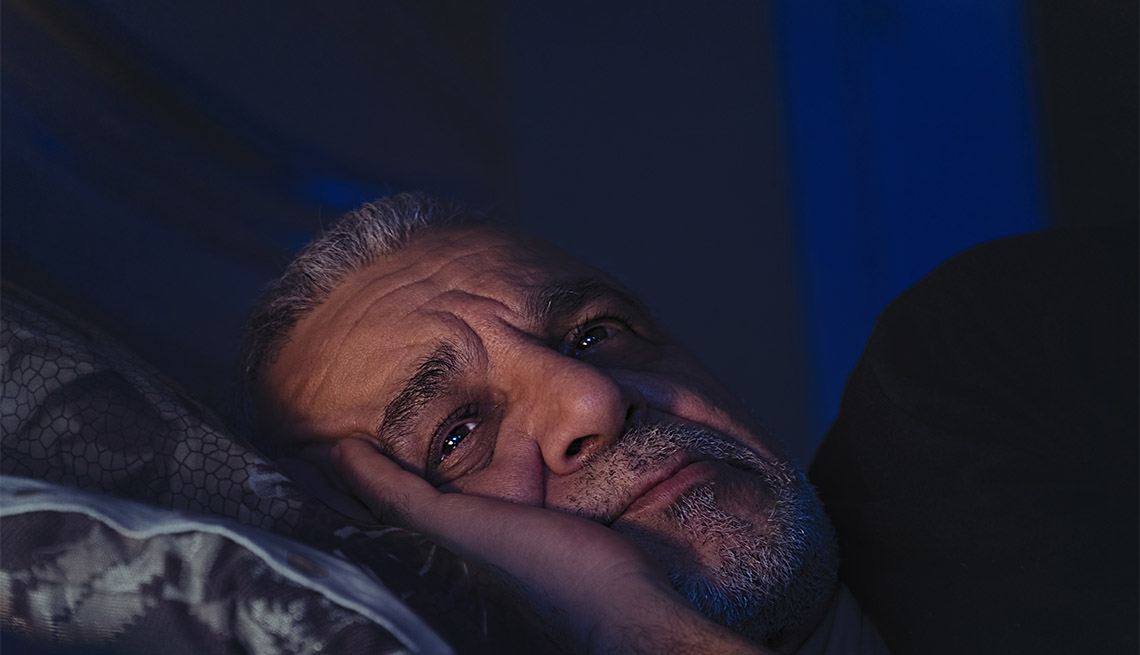
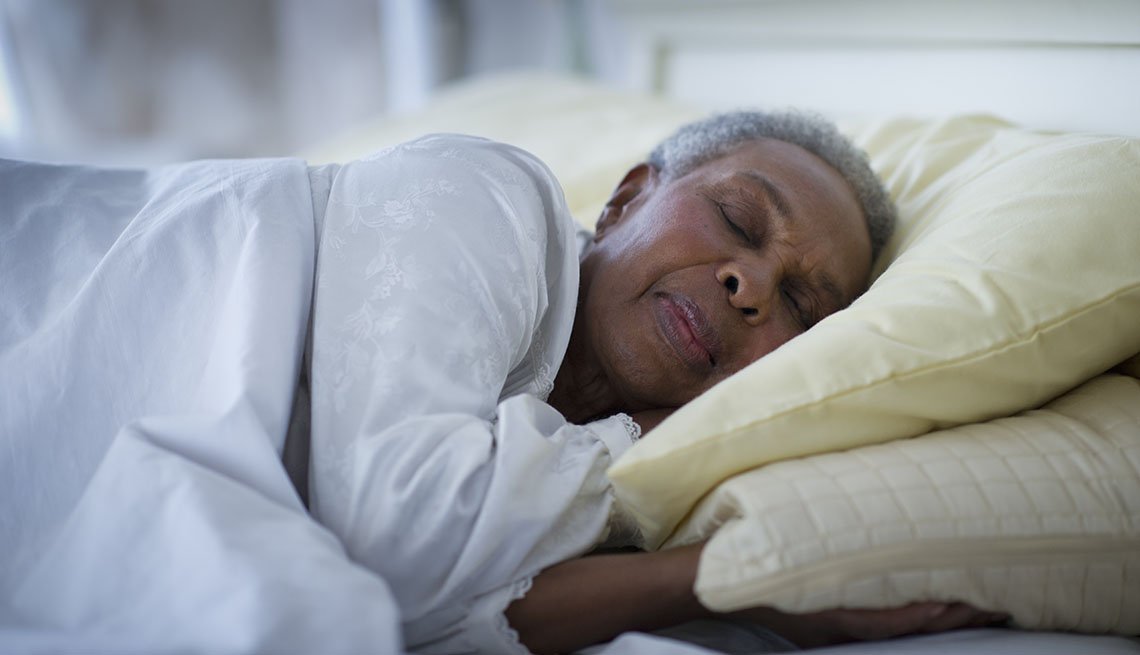
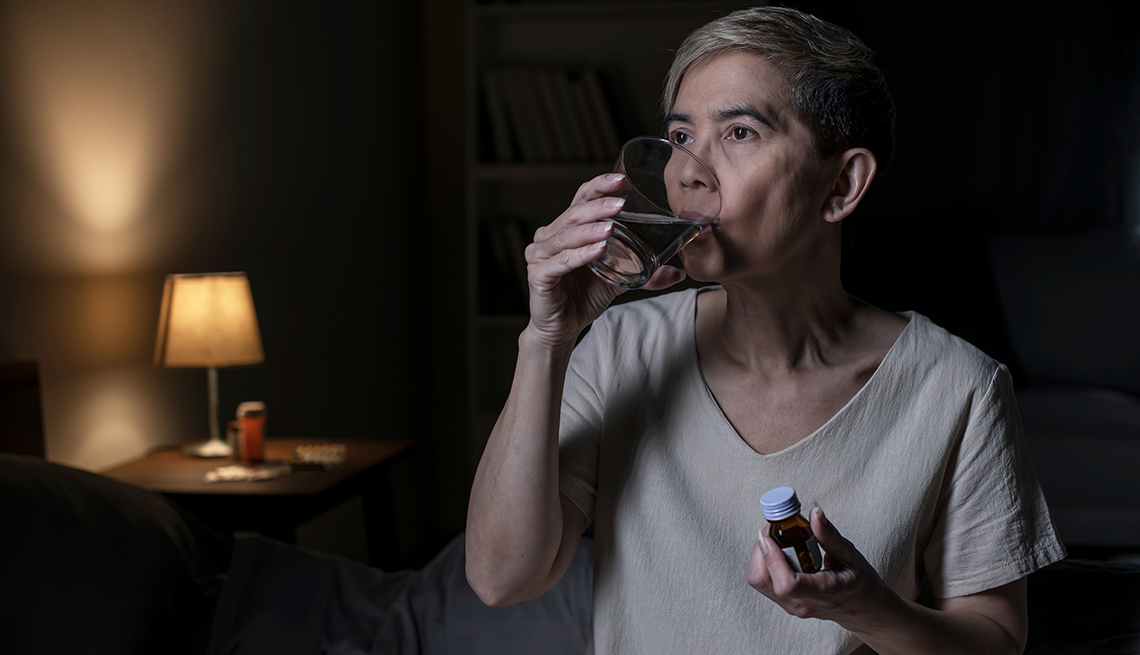




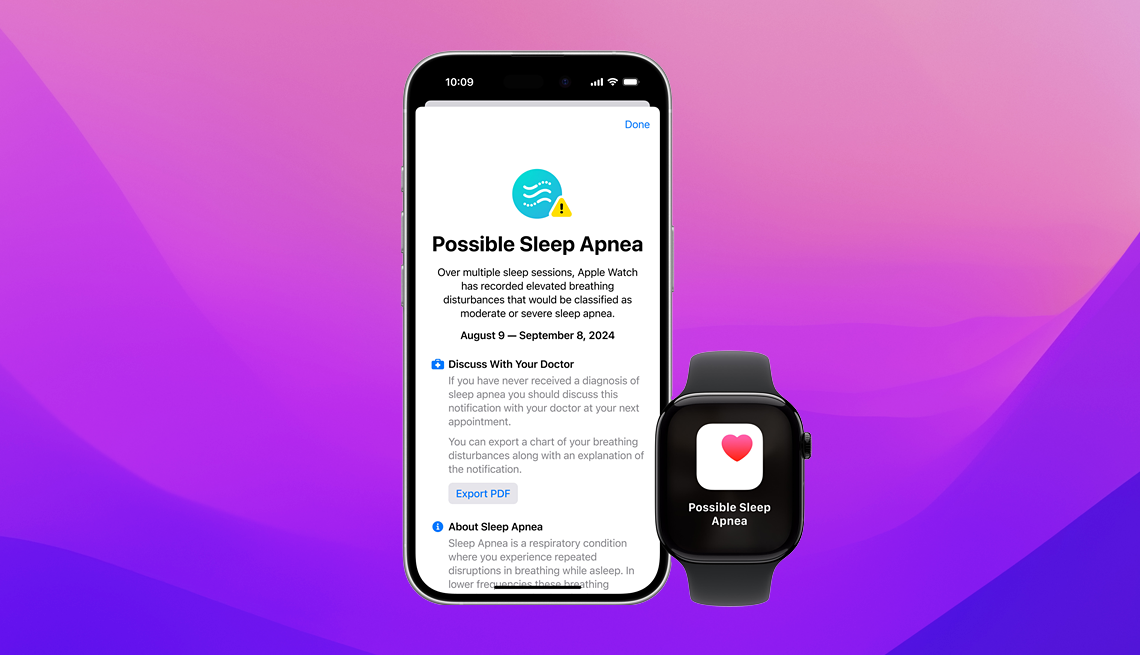
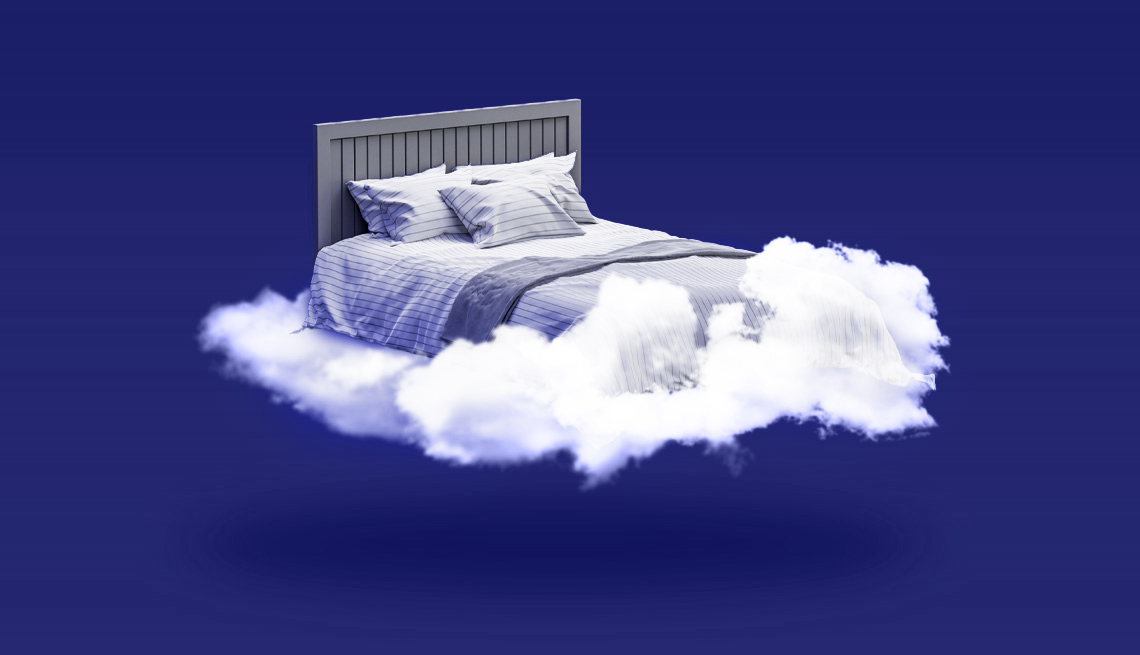
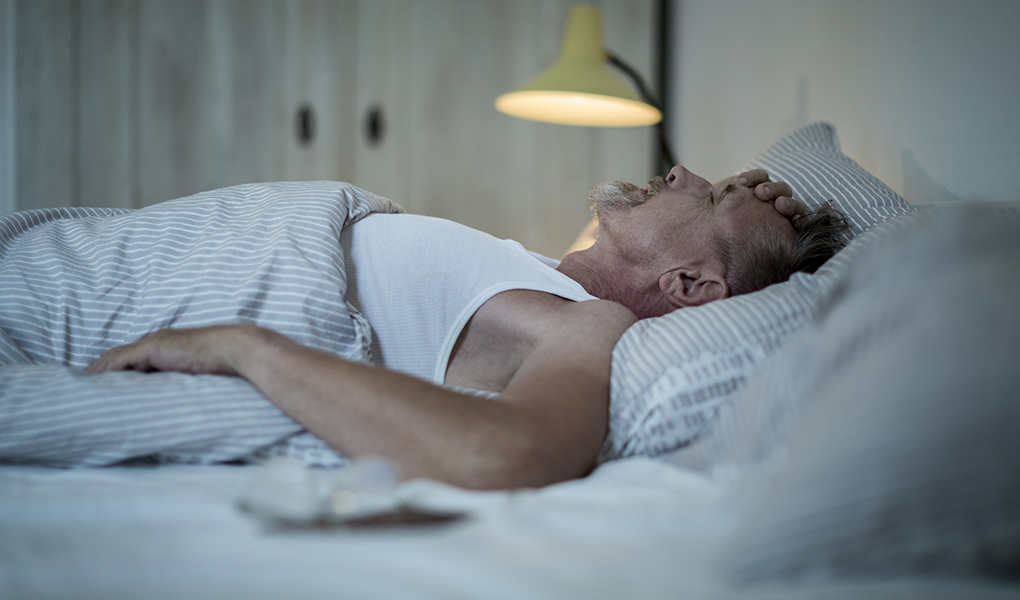
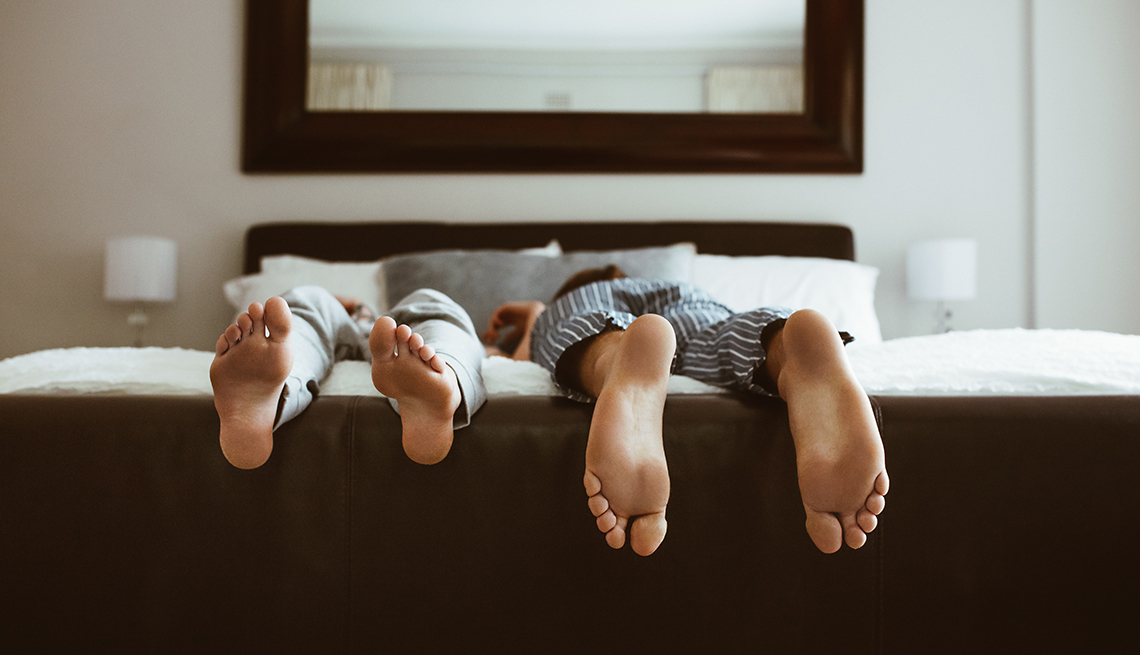




More AARP Smart Guides
Keep Your Memory Sharp
22 science-backed ways to growing a healthier, happier brain
Clean Your Home — Efficiently
Room by room, now’s the time to tackle that to-do list
Manage Seasonal Allergies
Achoo! How to understand and treat your symptoms
AARP Members Only Access
Enjoy special content just for AARP members, including full-length films and books, AARP Smart Guides, celebrity Q&As, quizzes, tutorials and classes
Keep Your Memory Sharp
22 science-backed ways to growing a healthier, happier brain
Clean Your Home — Efficiently
Room by room, now’s the time to tackle that to-do list
Manage Seasonal Allergies
Achoo! How to understand and treat your symptoms